Fisheries biologists have been wringing their hands for decades in cold-water regions of the Pacific Ocean due to the proliferation of farmed Atlantic salmon and the threats they pose to native fish and the health of inshore waters, both in North America off the coasts of the U.S. and Canada, and in South America, where salmon farms are common off the coast of Chile.
The threats are real, and there are lots of them, from the creation of oceanic “dead zones” beneath the net pens to the increase in the population of sea lice that attach themselves to captive fish and propagate into numbers that just aren’t natural. And, of course, there have always been concerns about diseases that often accompany large-scale aquaculture, and from escapees gaining a foothold in the Pacific, where five native species of salmon perform a fragile ecological dance in the chilled waters of the region. South, in Chile, both non-native salmon from the Atlantic ocean and from the northern Pacific, do, indeed, run up coastal rivers and spawn, likely impacting native fish, but also providing a sportfishing opportunity that many anglers enjoy.
But, until recently, the presence of Pacific salmon in the North Atlantic hasn’t moved the “environmental disaster” needle much. That’s changing, thanks to an invasive Pacific salmon that is showing up in larger numbers in traditional Atlantic salmon rivers in Scandinavia, as far south as the British Isles and even to the east coast of Canada. The culprit in question is pink salmon, the smallest and most numerous of the Pacific salmon family.
Though they are harvested in huge numbers for canning, use in pre-packaged meals, to be frozen as bite-sized nuggets and the like, pink salmon fetch a lower market value due to their low oil content and the fact that their flesh loses its luster when the fish enter freshwater to spawn. King (Chinook), coho and sockeye salmon enjoy more appreciation among consumers.
Pinks were first introduced into the North Atlantic in 1959 — the former Soviet Union introduced them in the rivers draining into the White Sea off of the Kola Peninsula as a potential source of protein for a nation often on the brink of starvation. That stocking effort by Russian fisheries managers continued for 40 years. The non-native fish have turned up in Scandanavian waters almost every year since 1960. Their numbers are growing and since 2017 there’s been a notable uptick in the number of these exotic salmon pioneering their way into the rivers of Scandinavia, Ireland and Britain.
The worry in these regions of the North Atlantic largely mirrors the concerns shared by fisheries managers in the North Pacific in regard to introduced Atlantic salmon — what impacts will non-native salmon have on native salmon?
Some are worried the Pacific natives will crowd out an already troubled Atlantic salmon population, or that these exotic fish will bring with them parasites or pathogens. Additionally, pinks are prolific, returning after just two years at sea to spawn. They are, by far, the most abundant of the five Pacific salmon species. This year alone, in Alaska, fisheries managers predict a commercial pink salmon harvest of more than 124 million fish. In the North Atlantic, if the population trend continues, fisheries managers are worried that pinks will eat themselves out of house and home — pinks in the North Pacific eat plankton, krill and other small crustaceans while at sea.
While the North Atlantic possesses the same prey base for salmon, that prey base is primarily used by native Atlantic salmon, and there may not be enough to go around, should pinks continue to expand their Atlantic Ocean range.
Since pinks were first introduced in the White Sea, they have been seen on a regular basis in waters of Finland, Sweden and Norway. But 2017 seems to have been a watershed year for the non-native fish — they were observed in high numbers along the entire Norwegian coastline. That’s also the year when pinks were first observed by many in Ireland and Britain and even in Iceland and as far west as the east coast of Canada. These waters are all within the native range of Atlantic salmon. Biologists worry that, should the pinks continue to proliferate, the invaders could do real harm to an important commercial and recreational fishery.
And there’s no doubt about it: pinks are pioneers.
“In an Alaskan stream made available by a retreating glacier, pink salmon spawners entered the stream 10 to 12 years after the first invertebrates (chironomid larvae) were observed, and maximum water temperature had reached 8.7 degree celsius,” reads a compilation study titled, “Pink Salmon: the reluctant invader,” published in SpringerLink in December 2018. “In the large Fraser River, removal, after many years, of a migration barrier caused by a landslide, enabled pink salmon to re-establish upstream after one to two generations (2 to 4 years) (Pess et al. 2012).”
As of now, though, there are likely more questions than there are answers to the pink salmon dilemma in the North Atlantic. For instance, will a warming climate help or hurt the expanding population of Pacific fish? “Climate change may also improve possibilities for spreading and establishment in a larger area than observed so far, or a warming climate may act against this presumably cold-water fish species,” the study reads.
But there are real concerns in Ireland and the British Isles about pinks, which are often described as “aggressive” when observed by anglers and fisheries managers. Just this June, a pink salmon was caught by an angler in the famed Ridge Pool on the River Moy in Ireland, and Inland Fisheries Ireland issued an alert asking anglers to keep and kill any pinks they catch because “Pacific pink salmon could force Atlantic salmon and trout out of holding pools into smaller channels.”
It goes beyond the fishing, of course. The SpringerLink study documents a notable downturn in available food for native fish during years when pinks are preparing to return to freshwater to spawn.
“The impact on the native anadromous salmonids is likely related to the abundance of pink salmon,” the study reads. “A high number of aggressive pink salmon on the spawning grounds of native salmonids may cause disrupted or failed spawning by the natives. Furthermore, a high abundance of pink salmon fry feeding in the rivers for a few weeks will most probably depress the availability of space and suitable zoobenthos for other salmonids. In the North Pacific Ocean, it is shown that in years with unusually abundant pink salmon, the food resources are depressed, with a negative impact on other Pacific salmon species, other pelagic fishes and sea birds (Springer et al. 2018; Ruggerone and Irvine 2018).”
Nevertheless, the impact — or potential impact on native salmonids of the North Atlantic — remains largely a mystery. But the worries, backed by science, are real and another example of how human manipulation might have negative effects on native fish species. A well-intentioned effort to feed a starving nation more than 70 years ago might impact wild and native salmon populations that cross international borders.
For now, anglers in Scandinavia and the British Isles are being asked to harvest any pink salmon they catch. But, if pinks behave in the Atlantic like they do in their native Pacific waters, angling won’t be enough to control them. Only time will tell.











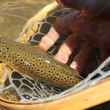



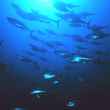
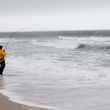








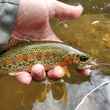



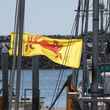
Comments
Bruce Pencek replied on Permalink
SpringerLink is the publishing platform shared by the many academic journals published by SpringerNature. The "reluctant invader" article was published in the journal, _Biological Invasions_. The full citation (with correct title) is for readers who want to chase it down is
Sandlund, Odd Terje, Berntsen Henrik Hårdensson, Peder Fiske, Jorma Kuusela, Rune Muladal, Niemelä Eero, Ingebrigt Uglem, et al. 2019. “Pink Salmon in Norway: The Reluctant Invader.” _Biological Invasions_ 21 (4): 1033–54. https://doi.org/10.1007/s10530-018-1904-z.
Pages